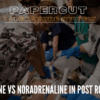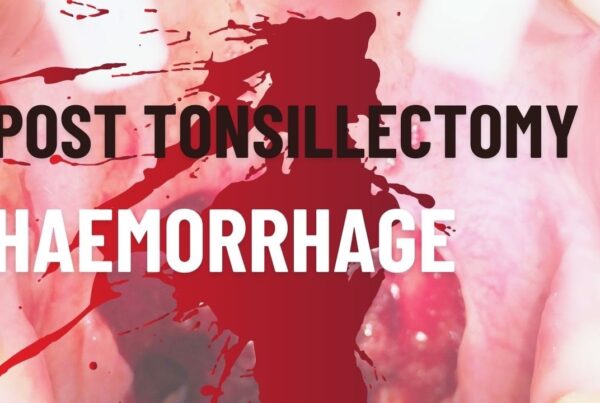I have a lot of questions. Here are some answers and a few resources for you.
This is all uncharted territory. We have some evidence from SARS and other instances that we can use, but I don’t think that anyone really knows all the answers. We have Government Health services guidelines, which we all should be using whether its CDC in the US or DHS in Australia. However I treat these as minimum guidelines and in some situations I may go a level higher. It’s a balance, where too much can cause mistakes and contamination and too little can cause mistakes and contamination.
Please give feed back on the blog, so we can all learn from this. Tell everyone what you do. Let’s learn from each other. Below is my thinking. Is it right? Do you do something different?
Here are my thoughts on airway….. and I am thinking aloud here.
We have to think of 3 main patients:
1. The well patient that may need a little support
2. The hypoxic patient that we have to assist and even possibly intubate
3. That patient who arrests and potentially has COVID-19
I won’t talk much about the first patient type, and those that arrest, I would as always, say NO AIRWAY MEASURES until ROSC ie not even bag valve mask. However we may be able to provide some passive ventilation here, with what I propose below.
How about the hypoxic patient?
There are a lot of great resources out there, but not a lot of great evidence. The concern is that sometimes, there may be too much information. Everyone is doing it their way and we have no consensus. It becomes confusing.
I’m in rural hospital with no pressure protected rooms in the ED. I want to make sure I’ve got personal protective equipment on properly for my staff and myself and to ensure the person performing the intubation is as protected as possible.
I also want to ensure that because I will be transferring intubated patients to larger centres that my indications for intubation are aligned with theirs. What I don’t want to happen is, I intubate someone, potentially expose myself and then try to transfer and the larger centre says, we wouldn’t have intubated them.
Align with each other, so we are all on the same page.
The main pathology is ARDS. In the hypoxic patient we need to provide oxygen at the lowest FiO2. What will you accept as minimum saturations? I’ll probably accept 90% as the lowest, however if we are moving towards intubation, this will need to be improved as these patients will desaturate quickly during apnoea.
Will you use nasal prongs?
At low flow with a mask on these may be OKAY, however these are your well patients. Probably not the one’s I worry about as much.
Will you use a Rebreather Mask/Hudson mask? My concern is that we are pumping so much oxygen in and with the patient breathing aerosol generation it significant. We know that the seals are horrible with these.
HFNC: These may be OKAY. The WHO believes that they might be, however, there is also dispute. NO real evidence. I’m not sure that I’ll be using them, as there is a risk that we are blowing aerosol particles everywhere. The reason why we believe they are OK, is that the flow of 60L/min, is far less than the flow of a cough or sneeze. I’m not sure that’s the thinking we should be using. Perhaps if we turned the flow down to say 15-25 L/min, with a mask on the patient that might be better, but again not sure.e
We know that patients with HFNC performed better in pneumonia in some of this previous SARS work, those patients did better, however it may also be that those patients that got HFNC were less unwell.
Non-Invasive Ventilation: Unless we have a negative pressure room and are all out of other options, this is a no go for me. Certainly no BiPAP, and only CPAP and only in negative pressure room. It may be that if we run out of ventilators, we have to use them. I hope we don’t get to that stage. The reasons I won’t be using them are;
(i) We know that NIV doesn’t really work from what evidence there is in the SARS outbreak( only a series of 12 patients Annals of Int Med 2014) SARS and the FLORALI trial demonstrated it doesn’t work in pneumonia.
(ii) It may delay intubation and then the crash intubation occurs which may lead to mistakes.
(iii) We’ve all seen the high pressures generate significant leaks around these masks.
What about intubation?
Plan early. Have a set of criteria that you will use to decide on intubation and stick to them. Have your checklists, your predetermined medications ready.
Have your closed systems and your infusions set up and ready to go, before intubation. It needs to be a simple connection, not a scrambling to find this and that.
Will you preoxygenate?
Some centres are saying that apneoic oxygenation is OKAY. I’m not sure it is.
I’ve put together a closed system of preoxygenation, allowing the patient to breathe 100% oxygen based on a video on EMCRIT. I’m not sure that this is the best, but it may be the best. Again it depends on face seal.
I use a mask used used in NIV, attach a viral filter and then attach the bag-valve and flush with oxygen. Ensure that the straps are on with no leak and allow the patient to breathe 100% oxygen. It’s sealed, and there isn’t a lot of positive pressure. It may work. Check with your anaesthetics and ICU guys and make sure it fits your infection control guidelines.
I don’t want to BVM the patient. Some centres are saying a minimum of 3 minutes prior to intubation, BUT MUST USE A 2 HANDED APPROACH. I believe it may be too great a chance of leak. I know that at the best of times we get intermittent leaks.
During intubation:
predetermined drugs –
Ketamine is the most likely agent for sedation.
Paralytic agents: Remember to use high doses. Not only because we want to make sure that the patient is paralysed and doesn’t cough, but also because sepsis patients usually need higher doses.
Rocuronium: 1.5mg/kg ideal body weight
Suxamethonium: 1.5-2 mg/kg total body weight
I will wait a full minute after giving the paralytic. I want to make sure that the patient doesn’t cough.
I will keep some metaraminol handy as these are sepsis patients and even with ketamine, we may see the BP may drop. If the patient’s pre-intubation BP is low, I will have already commenced some Noradrenaline and have that stabilised. (There is some suggestion that these patients, like all patients with sepsis have their cardiac output affected, however even more so, this patient group may be developing something similar to myocarditis or a cardiomyopathy).
I will use a video laryngoscope for intubation, although I know not everyone has this.
The most experienced person in the room will perform the procedure and it will be first attempt and best attempt.
When the tube is in, should we clamp the tube, or it doesn’t matter if the patient is paralysed?…. Or do we just put the cuff up and attach already prepared circuit, with closed suction system.
Confirmation of tube should be via end tidal CO2(not auscultation) and we should have pre-determined depths to which the tube is placed ie., 19-20cm
Should we try to use larger sizes of tubes, or as I believe a 7.5 tube to make it easier to intubate, ie multiple attempts equals increased risk
In terms of personal protective equipment when intubating, I have some suggestions and even more questions.
Certainly we should use:
-Cap- covering the ears
-N95 mask
-Face shield
-Impervious Gown
-Gloves
-Boot covers
Here are some questions:
1. Should we use a surgical mask over the N95, ensure an even tighter fit?
2. The incubator’s neck is exposed in many cases, we may need to ensure this isn’t. Perhaps just wearing a head gear that ties around the neck is fine, but this concerns me from the point of view of contamination when removing.
3. The gown should be one with elasticised ends on the sleeves to ensure a good seal
4. Do I need to wear goggles ensuring a good seal around my eyes under the face shield to protect the eyes from anything coming up under the face shield?
5. Should we double glove?(I believe so). Some centres are advocating surgical gloves, so they do not roll down as easily. Not sure about this.
This is always a balance between making things too complicated resulting in contamination, or keeping them too simple resulting in contamination.
The most important thing we can all do is PRACTICE, PRACTICE, PRACTICE!
Good luck out there!
Here are some resources. A few videos.
I’m not saying that these are right, just showing them to you. What surprises me is that every time I watch something, it is being done differently.
Handbook of COVID-19 prevention and treatment
COVID-19 Repository: A great site for all things COVID











Great. Succinct outline of real solutions to our concerns. Surgical gloves or not I don’t think matters, though they are easier to correctly don and doff. The latter being key here. Protection from contamination under goggles definitely important. This plus neck contamination….perhaps surgishield mask per usual then a second one upside down for good eye cover plus the neck. When wash hands, wash face and neck. I’m considering a long crew cut to control my (female) fly away medium length hair. I think controlling my hair might be one of the main reasons I touch my face. As you say, the virus is on surfaces much more than we think. I’ve never kept a surgical cap, sports cap, beanie or any headress on without having to poke at my hair intermittently.
I agree. It’s the things we don’t notice.
I’ve shaved the beard I’ve had for years, for a better fitting face mask.
If you could only give O2 by HM or Rebreather – which would you choose.
I work in urgent care. We don’t have much facilities.
EWhile waiting to transfer the patient – what can be used to give to patient.
We don’t really have isolation rooms either.
I would give Hudson mask at 6L/min. We tend to believe that above 6L/min is termed high flow, although no-one knows.
You can go up to 8-10L/min on the Hudson. I would also put a surgical mask over the Hudson mask.
Dear Peter and everyone,
Paper from Wuhan experience https://jamanetwork.com/journals/jamainternalmedicine/fullarticle/2763184?fbclid=IwAR3hoGDZKs1YmMkW7emL89WD0TohcFwSdl_72xzCjBO8PoyK5mBfGG7-qC0
NIV used successfully in 23/61 patients, so it clearly works for a decent proportion.
Interestingly only 5 ended up intubated and all died! So some of the failed NIV patients didn’t get intubated for some reason.
Another relevant review on NIV which discusses it’s use in SARS and flu.
https://err.ersjournals.com/content/23/134/427
Of the 5 papers discussing NIV in SARS most showed success in the majority of patients with no reported transmission of infection to staff.
CPAP vs BPAP? BPAP can be done poorly which is likely to fail. CPAP like HFNP is simpler to use. I would be happy to use BPAP with high PEEP and minimise pressure support watching tidal volumes.
Regarding transmission risk. Nothing convincing I can find of risk of NIV vs HFNP vs normal flow oxygen vs intubation vs patient coughing.
If using NIV a nonvented mask and a dual limb circuit makes logical sense to minimise aerosolisation. Full face mask preferable to oronasal.
CPAP via BVM and PEEP valve with ring and headstrap may be necessary in places with no other devices or have run out and may be effective for some.
I’d rather a smaller site temporize with CPAP until a skilled, rehearsed team arrives than attempt an unplanned highly infectious intubation.
As for intubation. My thoughts are
Team of 3.
1. NIV for preoxy ie VAPOX to allow time for careful preparation, donning PPE, plan spelt out, should already be an agreed plan hopefully. As I’m thinking the progression would be NIV for initial stabilisation/ trial. The patient may well already be on this.
2. Give drugs, agree with ketamine and roc. We routinely use 2mg/kg of roc and it seems faster.
3. vent put in standby.
4. video laryngoscopy. This standback at arms length that some are proposing seems too difficult.
5. Insert ETT to predetermined depth. We measure length of patient as part of preRSI checklist to assist with ideal body weight, tidal volume settings and it will be useful to get an idea about depth. MDCalc has formulae for this.
6. Inflate cuff with manometer to ensure immediate appropriate pressure.
7. Vent should have inline closed suction on circuit
Best wishes,
Andre
All good things. You should take a look at the latest blog on ARDSnet and increased mortality. It maybe that we are jumping the gun with positive pressure and causing atelectotrauma. This thing doesn’t alway behave like SARS.
I came across a disposable Venturi CPAP device @ remote primary healthcare clinic. the O-two. Can add a viral filter Apparently used by QLD ambulance. role would be for pre-hospital transport of sick COVID pt. Possible role for pre-ox/ap ox.
have you come across use of this? Thoughts for its use in rural sites?
I have seen it. However we need to ensure the filter and the fit is right, as this is now a real high flow system.
I have one that I have put together that uses a CPAP mask, a T section and on one side of the T section is the non-rebreather bag and on the other is the filter.
303614 378660the most common table lamp these days nonetheless use incandescent lamp but some of them use compact fluorescent lamps which are cool to touch.. 644401